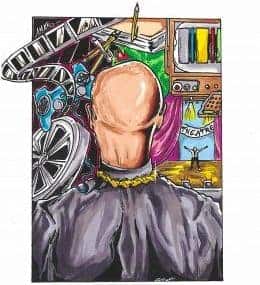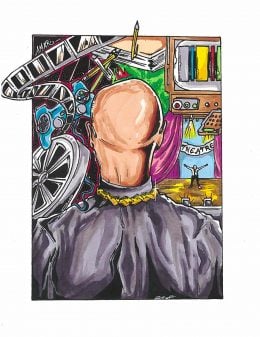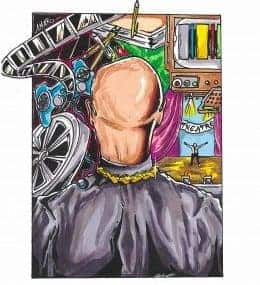Hidden Figures – Overview/ Review (with Spoilers)
Overview/ Review (with Spoilers) Hidden Figures is a feel good movie. One that exemplifies what the term edutainment means and there ain’t a bad performance in it. However, don’t expect it to win any major awards. Trigger Warning(s): Racism (Microaggressive Depiction – No Violence) Noted Actor(s) Katherine Johnson (Taraji P. Henson) | Dorothy Vaughn (Octavia…

Spoiler Alert: This summary and review contains spoilers.
Additionally, some images and text may include affiliate links, meaning we may earn a commission or receive products if you make a purchase.
Overview/ Review (with Spoilers)
Hidden Figures is a feel good movie. One that exemplifies what the term edutainment means and there ain’t a bad performance in it. However, don’t expect it to win any major awards.
Trigger Warning(s):
Racism (Microaggressive Depiction – No Violence)
Noted Actor(s)
Katherine Johnson (Taraji P. Henson) | Dorothy Vaughn (Octavia Spencer) | Mary Jackson (Janelle Monae) | Colonel Jim Johnson (Mahershala Ali) | Levi Jackson (Aldis Hodge)
Characters & Storyline
It’s 1961 in Virginia and as America faces off against Russia to claim the open world of space, three African-American women, among many, are facing off against all that has tried to hold them back. For whether it is their race, being a woman, being a Black woman, being a mother, and/or daring to have ambition in spite of, so many things in life led people to believe they couldn’t or shouldn’t. However, Katherine Johnson put in the work and made herself indispensable. Dorothy Vaughan, despite others not seeing her full potential, she made it so they needed her more than she needed them. Then, Mary Jackson, she proved that opportunity isn’t always guaranteed and sometimes, if not often, you may not even be thought of when it does come around. But that doesn’t mean you shouldn’t be ready. That doesn’t mean you shouldn’t fight to get an opportunity or make your own.
For that’s what Hidden Figures is about. Proving yourself in spite of others prejudices and forcing them to see past all these labels in their head. Leaving nothing but this person you fought the world to be.
Collected Quote(s)
Civil Rights ain’t always civil.
— Hidden Figures
Highlights
Janelle Monae
After her performance in Moonlight, so came the question of what could Ms. Monae do when she isn’t just a supporting character, but arguably one of the stars. Well, hold onto your hats because, arguably, playing the smart-mouthed but ambitious Mary, arguably Ms. Monae steals Penson’s thunder. To the point that, arguably, while Henson may have been one of the major names, alongside Ms. Spencer, which may attract people to the movie, alongside the figures represented of course, more than likely people will be talking more about Monae’s character and performance than theirs.
History Being Held To The Light
Like Henson has said often during the press tour, these aptly named hidden figures were unknown to me. Like the writer of your favorite movie, the person who sculpted your favorite teacher, there are many an unsung few whose work was detrimental to the success of others but their names are only known to a selected few. Thankfully, in both an educational and entertaining way, the work of these women are highlighted and their accomplishments brought to a visual media for easy consumption. Illuminating them like the stars they were helping astronauts reach.
Sisterhood, Motherhood, and Proof You Can Have It All
In the book Year of Yes by Shonda Rhimes, she talks about trying to have it all and failing. Sometimes it is missed birthdays, not being there for recitals and more. Things which hurt your kids in the moment, but that pride in what you do as they see you as a person and not just mommy, that helps to make up for it. All the women featured are mothers and while you only see the occasional moment of guilt, you are reminded of the sacrifices these women have put their relationships with spouses and children through for a goal beyond them.
Alongside that, you have to admire the sisterhood of the women featured. It’s like Iyanla Vanzant said during the House of Healing special, “I am not my sister’s keeper, I am my sister.” In this, we see a beautiful sisterhood. One which does include bickering and being annoyed at one another, yet they see each other, recognize each other, praise each other, and it is a beautiful thing. For while there is this battle of thinking having it all isn’t realistic, the lives of these ladies prove it can be possible. Not perfect, but possible.
Black Love
To add onto that, I loved how each of these ladies had a healthy relationship with their husband. Mary and Levi didn’t always see eye to eye, but at the end of the day, they loved each other. Heck, Katherine and Jim had some issues during the courtship stage, but he recognized the woman he could lose if he didn’t adapt and be the man he was capable of being, and that was just so beautiful to me.
The Importance of Opening Doors, Keeping Them Open, and Not Forgetting where You Came From
“The only thing that separates women of color from anyone else is opportunity.” Viola Davis said that more than a year ago and it still holds true, it also very much applies to this movie. For those who are people of color, or even come from immigrant households, there maybe this idea planted that an opportunity for one is an opportunity for many. What starts off in one company, one industry as a token can grow into a minority, and eventually a norm. This all can happen because of one person. In the movie, Dorothy is that one person. She doesn’t settle for what she is told she can do and so she searches for opportunity. She becomes an exception but doesn’t selfishly keep such a position worrying about herself. She is part of a community and the opportunity she made for herself she expands to all the colored women she has worked with.
Which, may I add, come in all different shades, styles, and sizes.
Macroaggression/ Subtle Racism
It’s the 60s, so naturally, a more blatant form of racism is going to exist. But what I loved about this movie is it didn’t rely simply on racism being who says, nigger. It focused on micro-aggression, those moments where if you don’t understand racism, or perhaps aren’t sensitive to it, you wouldn’t even know in the moment it was happening. Yet, over time, it goes from a simple side eye to a poke. Trying to get you to see you don’t have to be on the extreme to be or do something racist. Sometimes it’s just the small things, continuously done, which are the problem.
Criticism
Don’t See This on a Popular Day or During a Popular Time
Usually, I love when audiences talk during a movie. It makes things funnier, brings different insight into what is happening, and makes you feel connected to these strangers you are sharing this experience with. However, at the same time they can make what should be a serious moment into something comedic. They can throw off the vibe of the scene and how you interpret it. Thus sort of creating distortion between you and the connection you have, or are trying to, with the characters.
White Savior
It’s to be expected with white men running NASA at the time, probably still, they would have to be the one who orchestrates change. However, as Costner usually does when paired with Black actors, he takes it to a point where it is just eye roll inducing.
On The Fence
Taraji Delivers What is Expected
After reading Around the Way Girl, I understand Ms. Henson’s methods. Unfortunately, though, with reading the book, you recognize she can’t help but be a ham. She can’t help but bring some extra sass and jokes to help herself shine. Which is all well and good and certainly makes her character seem humanized, but it makes it so you don’t get lost in the character. You just see Ms. Henson in a different outfit than usual, maybe taming the volume of her voice, but still being as comical as ever.
The Comebacks and Comical Moments
That term “laugh to keep from crying” is on full display as we watch people deal with these Black women. I say people for Black men and white women participate in the oppression and disparagement. Yet, of course, to lighten things up, comebacks are had and comical moments to show that while our leads may have been knocked down, they still have some fight in them. Which, to me, while, like Henson’s performance, lightens things up, at times it does feel like the movie is entering a hardly touched territory. That is, a biopic which is more focused on comedic moments than the drama and tension.
Overall: Positive (Worth Seeing)
This film almost seems like a counterprogramming type of motion picture. One that would be released against a summer blockbuster. The reason I say that is that it has that vibe of not trying to stick to the rehashed script of focusing on it’s based on character’s troubles and focusing solely on how they overcame. It lets us see these women in love, have fully fleshed out friendships, shows them laugh, make jokes, and not just focus on inspiring you but their peers. Which is why this is worth seeing. However, as noted in the overview portion, it doesn’t have that major accolade sweeping vibe. It’s a feel good movie, with just enough depth so you can recognize the issues a character goes through, but not enough so that it matches the high of the jokes with the low of a character’s struggle.
Follow/Subscribe To Our External Pages
- Plot and Dialog - /100
- Character Development and Performances - /100
- Visuals and Sound - /100
- Pacing - /100
- Value For Intended Audience - /100

